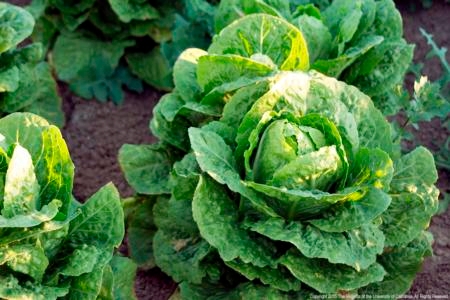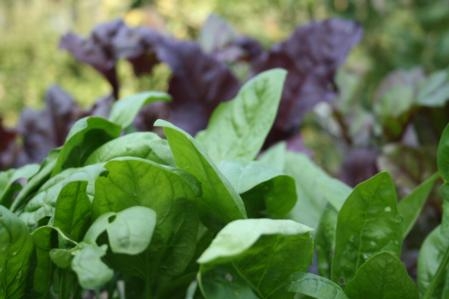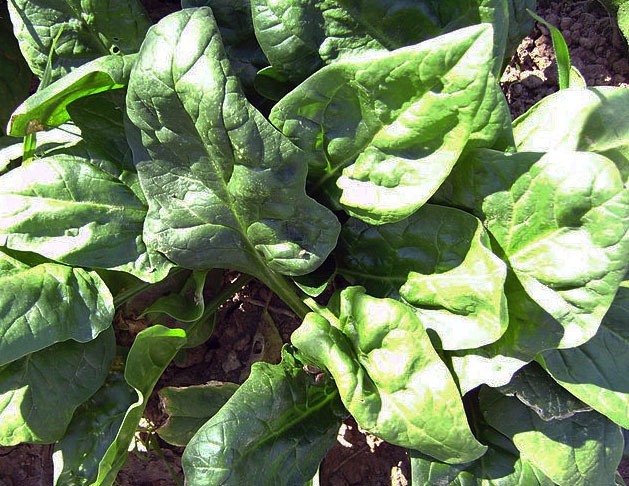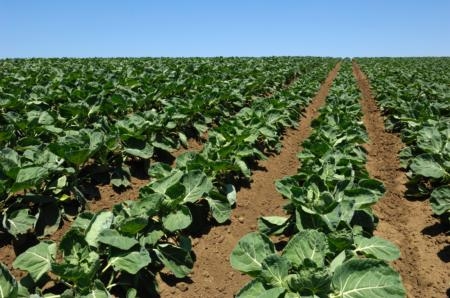Posts Tagged: spinach
Cost estimates for growing romaine hearts and organic spinach released
Two new studies on the costs and returns of growing romaine hearts and organic spinach have been released by UC Agriculture and Natural Resources' Agricultural Issues Center.
Sample costs to produce and harvest romaine hearts and organic spinach in the Central Coast Region – Monterey, Santa Cruz and San Benito counties – are presented in these studies.
The analysis is based upon a hypothetical farm operation of a well-managed farm, using practices common to the region. Input and reviews were provided by growers, UC ANR Cooperative Extension farm advisors and other agricultural associates. Assumptions used to identify current costs for these crops, material inputs, cash and non-cash overhead are described. A ranging analysis table shows profits over a range of prices and yields. Other tables show the monthly cash costs, the costs and returns per acre, hourly equipment costs, and the whole farm annual equipment, investment and business overhead costs.
The new studies are titled “2015 Sample Costs to Produce and Harvest Romaine Hearts in the Central Coast Region” and “2015 Sample Costs to Produce and Harvest Organic Spinach in the Central Coast Region.”
These two studies can be downloaded for free from the UC Davis Department of Agriculture and Resource Economics website at http://coststudies.ucdavis.edu. Cost-of-production studies for many commodities are also available.
For additional information or an explanation of the calculations used in the studies, contact Don Stewart at the UC ANR Agricultural Issues Center at (530) 752-4651 or destewart@ucdavis.edu.
UC Cooperative Extension advisors help spinach growers finesse fertilizer applications
UC Cooperative Extension advisors are studying the critical balance between fertilizer application and absorption in Salinas Valley spinach crops to help farmers meet new water regulations, reported Dennis Taylor in the Salinas Californian.
Richard Smith and Michael Cahn, UCCE advisors for Monterey and other Central Coast counties, have been conducting field trials for several years to determine volume data on fertilizer application. Once growers know exactly how much nitrogen their crop is absorbing, they can more precisely apply an appropriate amount.
Smith explained that baby spinach will absorb roughly 80 percent of the nitrogen it is going to take up in the final two weeks before harvest, making timing critical, Taylor reported. Spinach harvested a few days later, called "teen spinach" uses about 100 pounds of nitrogen per acre; larger-leafed spinach can used up to 120 pounds.
“No (previous) studies had evaluated high-density planting of clipped or bunched spinach grown on 80-inch beds,” said UCCE research assistant Aaron Heinrich. “Our study was specifically designed to provide data on the nitrogen uptake characteristics of spinach and to evaluate ways to improve nitrogen fertilizer management.”
Survey identifies 19 produce candidates for a farm-to-WIC program
A new federal voucher that gives low-income women access to a range of fruits and vegetables could provide unique new marketing opportunities for California growers.
In 2009, the federal Special Supplemental Nutrition Program for Women, Infants and Children (WIC) began distributing monthly cash vouchers to low-income women with children to buy fruits and vegetables. The program reaches almost half of the infants and one-quarter of children under 5 years old in the United States.
A team of UC Cooperative Extension (UCCE) researchers and nutrition advisors has been exploring the possibility of developing a farm-to-WIC program that would link these low-income consumers with local growers. The purpose of such a program would be to increase the consumption of a wide variety of fresh produce, with a focus on locally grown produce when available.
UCCE conducted a survey of produce preferences and buying habits among WIC participants in Tulare, Alameda and Riverside counties in 2010. The full study is published in the January-March 2012 issue of California Agriculture journal.
Based on the results, the UCCE team developed a list of 19 produce items to promote in a possible new farm-to-WIC program. They are:
|
|
|
Although mustard greens and collards were not popular across all sites, the advisors gauged a potential market in Alameda County, so these were retained. Based on write-in responses, oranges were also added.
In California, which has the nation's largest WIC program, 82 local agencies serve about 1.43 million participants at 623 local centers, and WIC participants can redeem their monthly vouchers at 4,000 grocery stores statewide. About 40 percent shop at WIC-only stores, which stock and sell only WIC-authorized foods.
Stocking produce is relatively new to WIC-only stores; before rollout of new WIC food packages in October 2009, these stores were only required to stock limited amounts of fresh carrots. In the survey, most WIC participants (58 percent to 72.3 percent) responded that their preferred stores offered many choices, but fewer participants (18.5 percent to 41 percent) rated the produce quality as “excellent.” Key factors determining purchase decisions were produce quality and freshness, and nutrient value (vitamins and minerals). Cost was relatively less important, possibly because WIC participants procure the produce with the vouchers.
The list has served as a starting point for discussions with growers and WIC vendors.
“The survey showed that WIC participants were interested in purchasing fresh produce with better quality and more variety,” wrote lead author Lucia L. Kaiser, Cooperative Extension specialist in the UC Davis Department of Nutrition, and co-authors, in California Agriculture. “Some WIC participants that we surveyed said they avoided shopping at WIC-only stores in part because these interests were not met.”
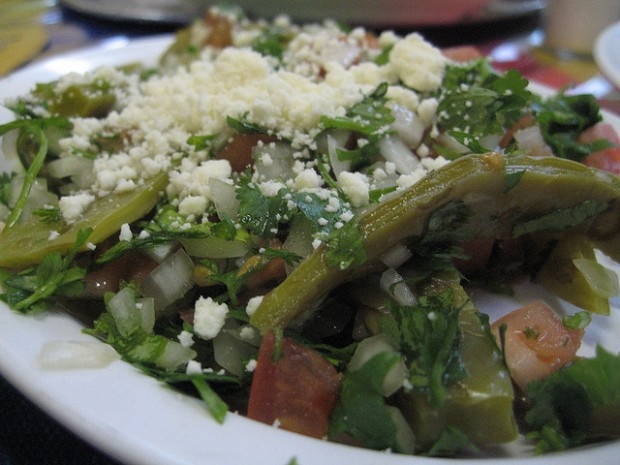
A dish made with nopales (cactus pads).
Spinach safer five years after E. coli outbreak
Salinas Californian reporter Andy Stiny wrote a story on the 5th anniversary of the E. coli outbreak in spinach grown in San Benito County. He reported that Steve Koike, plant pathology farm advisor for Monterey County, said California's spinach industry is rebounding from the setback. Bonnie Fernandez-Fenaroli, executive director for the Center for Produce Safety at UC Davis, is quoted as saying, "A lot of research is going into all produce right now." The center has 54 produce safety projects under way. Christine Bruhn, a food marketing specialist and director of the Center for Consumer Research at UC Davis, said recent surveys show consumers are more concerned about meat products but 30 percent said they are concerned about produce safety. "We advise people to wash their sink and their hands, then wash produce in running water and dry with a clean paper towel," Bruhn told the reporter. "This reduces but does not eliminate bacteria."
UC Berkeley professor appointed to systemwide position
Sybil Lewis, The Daily Californian
UC Berkeley professor Barbara Allen-Diaz has been appointed University of California systemwide vice president for Agriculture and Natural Resources, reports the Daily Californian, the UC Berkeley student newspaper.
UC food safety research on the national news
Last Saturday night, the CBS Evening News aired a six-minute special report on food safety. The research component for the story featured an appearance by UC Davis Cooperative Extension food safety specialist Linda Harris, in which she explained work underway to understand the potential food safety impact of irrigation practices on leafy green vegetables.
Reporter Bill Witaker noted that cutting edge research is being conducted around the country to find out how pathogens make it onto fresh produce and how to reduce the risk. He used the UC Davis Center for Produce Safety as a case in point.
Interviewed inside her lab, Harris told Whitaker the effectiveness of her work is "hard to prove, it's hard to measure, but I really think we do make a difference."
UC research isn't confined to laboratories. Three UC Cooperative Extension farm advisors in Monterey County - Steve Koike, Richard Smith and Michael Cahn - are working with campus-based researchers to determine the ability of the deadly E. coli 0157:H7 to survive in the field.
They reported in UC Delivers that they used harmless E. coli as surrogate organisms to evaluate how variations in soil moisture and environmental conditions impact the organism's survival in soil, water and on plant surfaces. In addition, experiments on E. coli source-tracking, detection technologies and field ecology are being conducted to gather information from an environment that reflects the actual farming conditions of the local agricultural industry.

UC scientists are helping protect the safety of the U.S. food supply.

